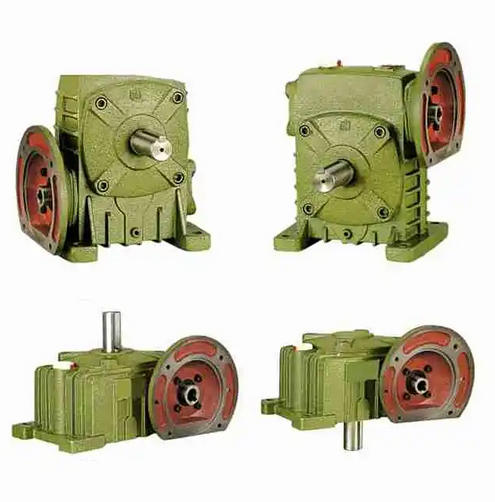What factors are related to the transmission efficiency of WPDX135-40-3KW worm gear reducer
The transmission efficiency of WPDX135-40-3KW worm gear reducer (usually in the range of 65%~80%) is influenced by various factors, and the core revolves around the characteristics of "sliding friction dominant and multi component collaborative work" of worm gear transmission. It can be mainly classified into four categories: core characteristics of meshing pairs, lubrication system status, structural design and manufacturing accuracy, and operating conditions. The specific analysis is as follows:
1、 Characteristics of worm gear meshing pairs (the most critical influencing factor, accounting for over 60%)
Worm gear transmission is mainly based on sliding friction and supplemented by rolling friction. The design, material, and fitting accuracy of the meshing pair directly determine the basic transmission efficiency.
1. Number of worm heads and transmission ratio
The number of worm heads is the core variable that affects efficiency. The more worm heads (threads) there are, the larger the lead angle, and the lower the proportion of "sliding friction components" during meshing, resulting in higher efficiency.

The transmission ratio of this model is 40 (large transmission ratio), usually paired with a single head worm (single head worm has a small lead angle, which can achieve a large transmission ratio), with a high proportion of sliding friction and lower efficiency compared to double head/triple head worm (single head is about 10% to 15% less efficient than double head).
Indirect influence of transmission ratio: The larger the transmission ratio, the more teeth and diameter of the worm gear, the longer the meshing contact path between the worm gear and the worm wheel, the more accumulated sliding friction losses, and the efficiency decreases with the increase of transmission ratio.
Worm gear needs to have high hardness to resist wear (such as 20CrMnTi carburizing and quenching, hardness 58-62HRC);
Worm gears need to have high anti friction properties to reduce the friction coefficient (such as tin bronze ZCuSn10Pb1, aluminum bronze ZCuAl10Fe3).
If the worm gear is made of ordinary cast iron (with poor anti friction properties), the friction coefficient will increase from 0.05~0.07 to 0.1~0.12, and the efficiency can be reduced by more than 15%.
Surface smoothness: The roughness of the tooth surface directly affects the microscopic frictional resistance. If the roughness of the worm spiral surface is optimized from Ra1.6 μ m to Ra0.8 μ m, and the tooth surface of the worm gear is optimized from Ra3.2 μ m to Ra1.6 μ m, the frictional resistance of the tooth surface can be reduced by 20% to 30%, and the meshing efficiency can be significantly improved.
3. Mesh accuracy and assembly clearance
Processing accuracy: If the worm gear tooth profile error (such as pitch deviation, helix error) exceeds the 7th level accuracy of GB/T 10089, or if the radial runout of the worm gear ring is too large, it will cause "point contact" instead of the designed "surface contact" during meshing, resulting in local pressure concentration, increased friction, and a 5% to 10% decrease in efficiency.
Assembly clearance: The meshing clearance should be controlled between 0.2~0.4mm. A clearance that is too small can cause "stuck friction", while a clearance that is too large can cause meshing impact and clearance loss, both of which will reduce efficiency. In addition, if the deviation of the center distance between the worm gear and the worm wheel (should be ≤± 0.05mm) exceeds the standard, it will cause biased friction and further reduce efficiency.

